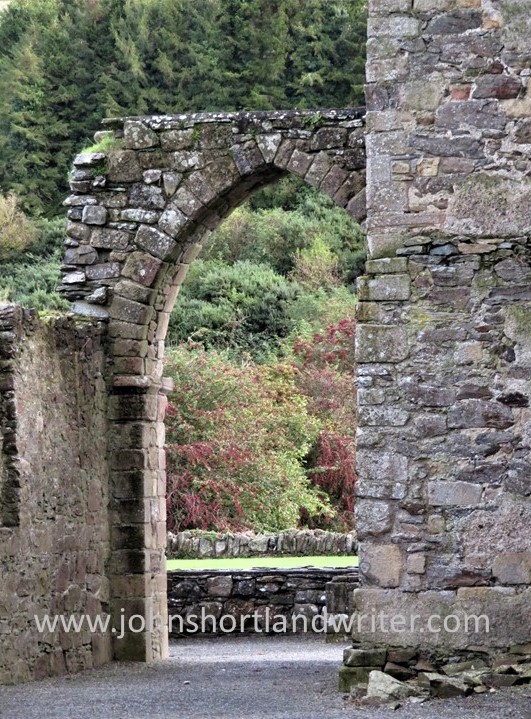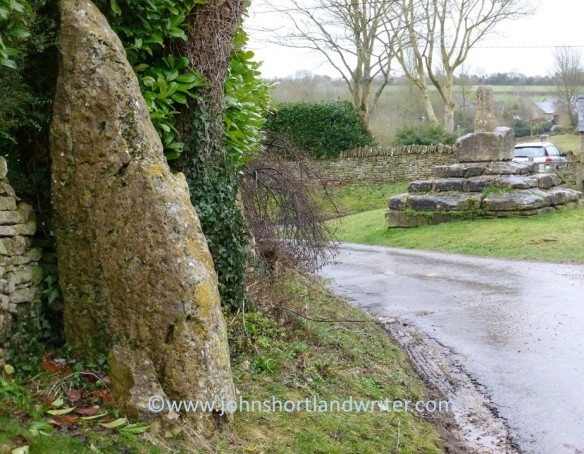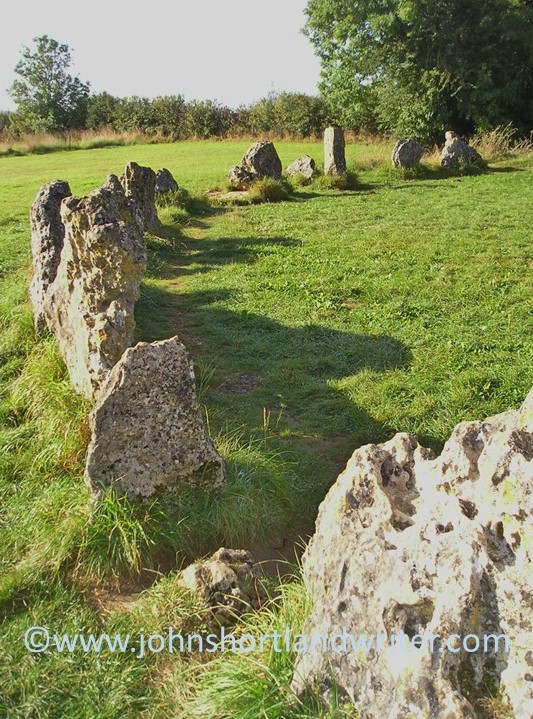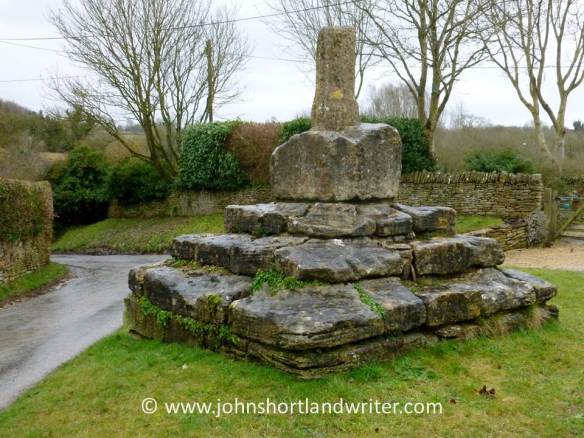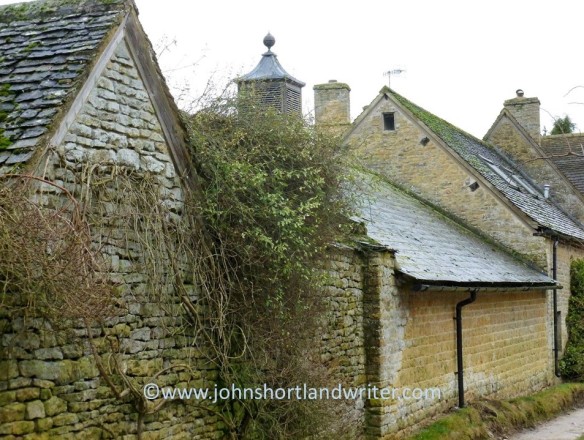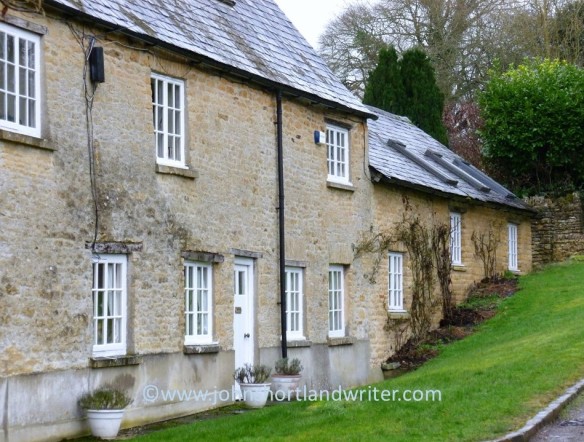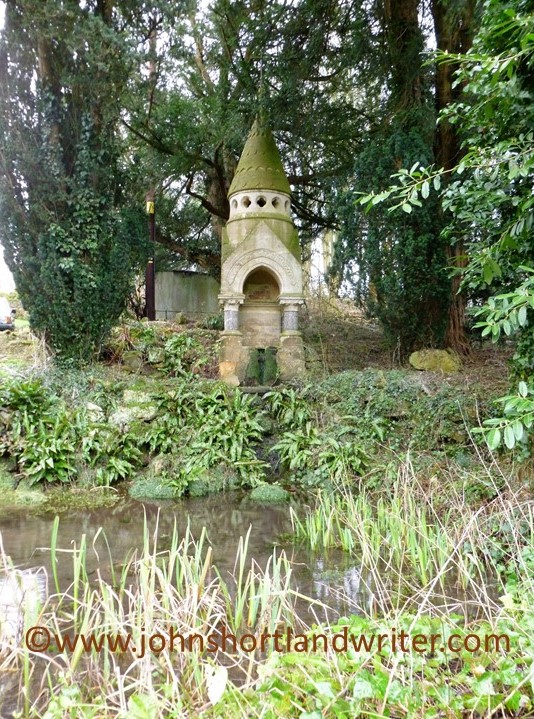One and a half hours drive southwest of Dublin and close to the Wicklow and Carlow counties of Ireland lies the small town of Baltinglass. When I visited briefly a week or so ago, the town centre seemed very empty of people which gave it a certain charm as well as the impression that you didn’t come here if in need of excitement. Google searches appear to confirm it – a website that seems to have last been updated in 2013; even the Wicklow tourism website couldn’t find much to say that would bring the hordes flocking. Although these are all reasons why I would rather like it there is also another very good reason to visit Baltinglass and that is the remains of the Cistercian abbey founded in 1148 by the King of Leinster, Dermot Mac Murrough.
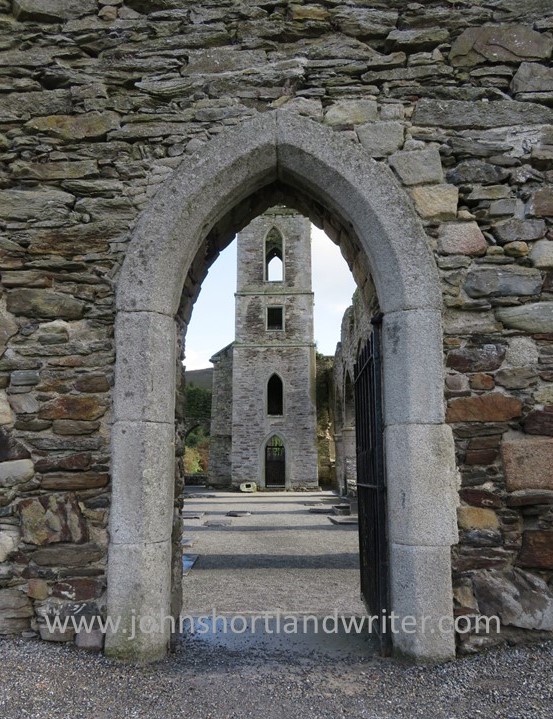
The dramatic entrance to Baltinglass Abbey
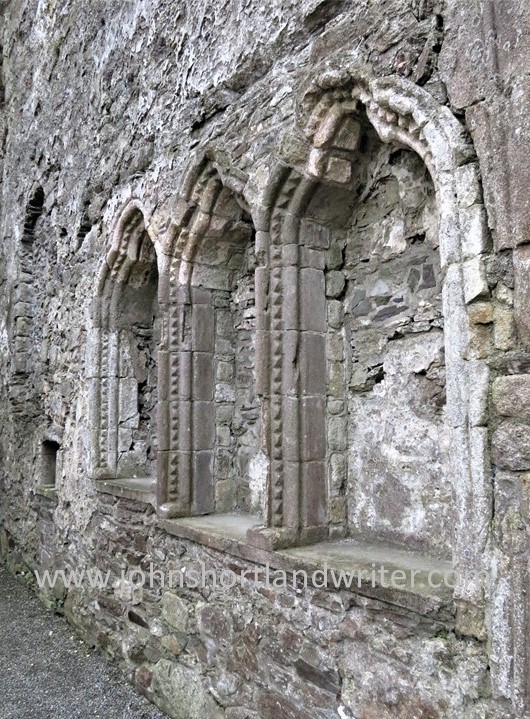
Today, the ruins consist mainly of the church although there would have been dormitories and other domestic buildings for the monks but of these there is no visible trace. The rather fine tower is of much more recent age for another church was built within the ruins in 1815, itself becoming obsolete by the 1880s.
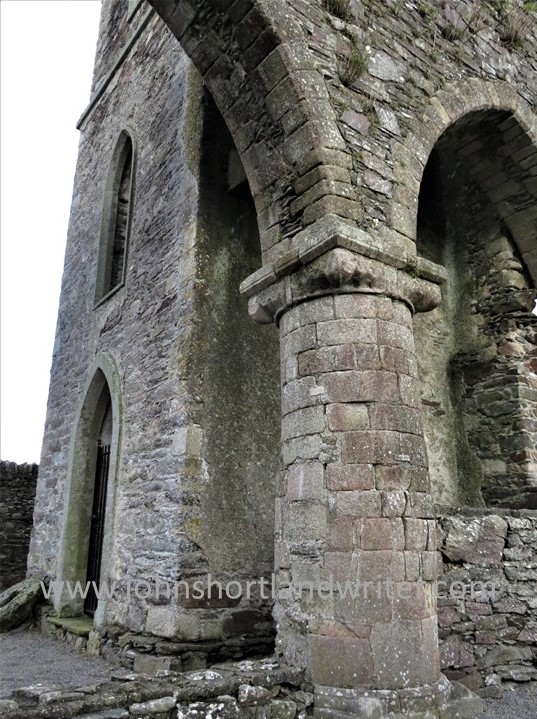
The ruined tower of the 19th century church set within the much older ruins of the abbey
Many of the capitals of the stone pillars are heavily carved with decorations that are similar to the abbey ruins of Jerpoint 40 miles to the south. However, the finest of the stone carvings can be found mounted in a doorway – the tomb lid of James Grace who died 23rd February 1605, sixty-nine years after Henry VIII’s dissolution of the monastery. There are numerous other and later graves within the ruins but none as fine as the Grace memorial, for it continued to be used as a graveyard right up to recent times.
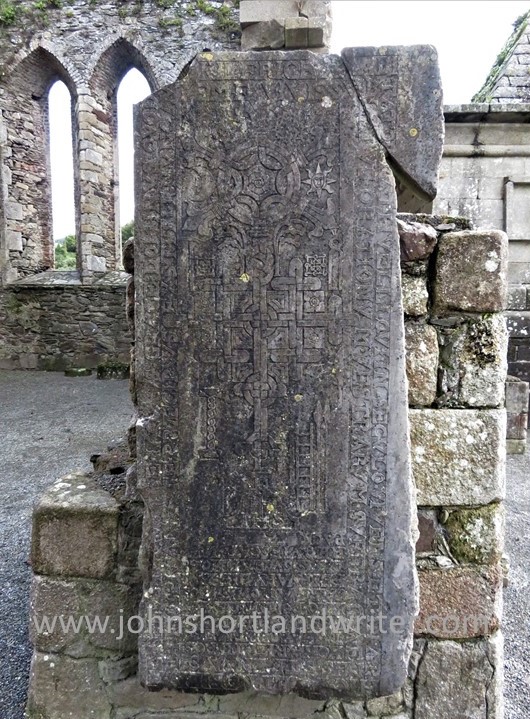
The intricately carved coffin lid of James Grace
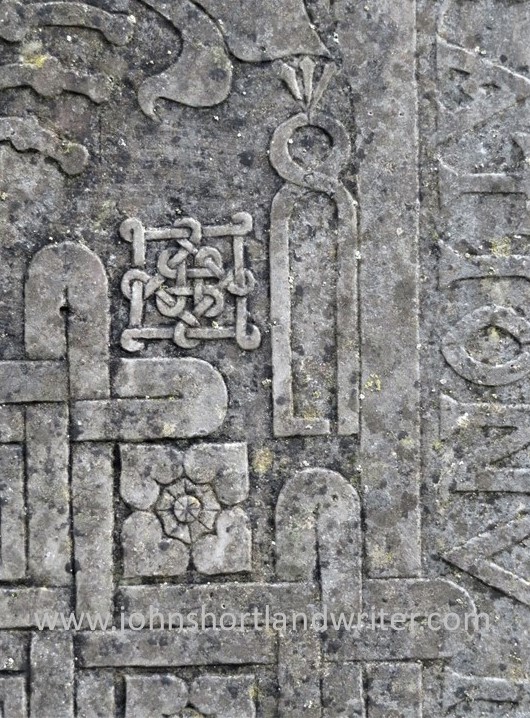
Detail of the James Grace coffin lid
Entry to the ruins is free and compared to many other historic sites, little visited. Certainly, at the time of my visit, I was the only person exploring them. This gives the perfect opportunity to explore at length and to absorb the abbey’s silent history. Although the site is quite small, there are countless interesting features to be discovered and the equally tranquil River Slaney is just a field away, a place for yet further quiet contemplation.
